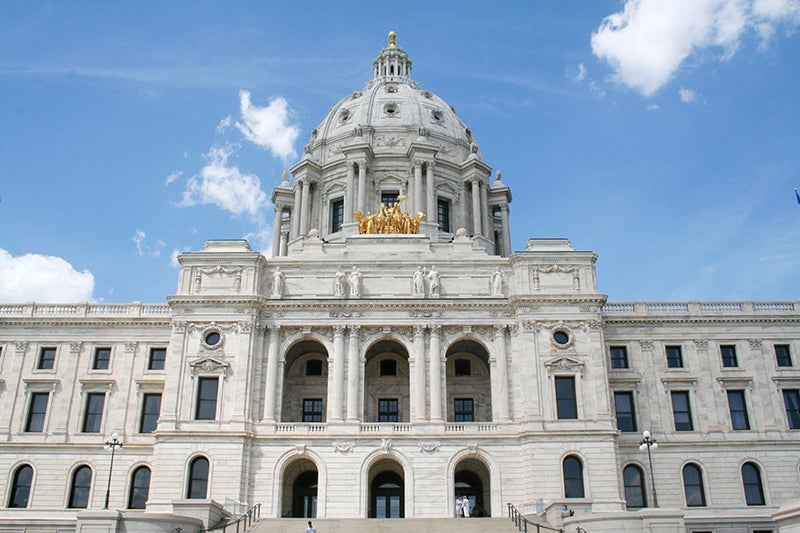Other’s Opinion: A taxing debate at the Capitol
Published 6:01 pm Tuesday, April 18, 2023

- Herald file photo
|
Getting your Trinity Audio player ready...
|
Associated Press Editorial Round-up
Star Tribune, April 8
Minnesotans should speak up as lawmakers consider $2 billion in tax, fee hikes.
The Minnesota Legislature is closing in on a tax package that could combine roughly $3 billion in tax cuts with $2 billion in tax increases.
If those numbers remain unchanged, they would make for a net cut of $1 billion. But that doesn’t tell the whole story. The ultimate mix could greatly shift who pays more and who benefits from targeted tax cuts and increases.
So why pass any increases in light of a nearly $18 billion budget surplus? For starters, about two thirds of the surplus is one-time money. The ongoing funds that constitute the remaining third are not sufficient to cover ambitious proposals with ongoing costs for education, transportation, housing and what could be the state’s first family and medical leave coverage plan. Education alone swallows up nearly half of the ongoing funds.
People of goodwill can argue about whether such programs are necessary and to what extent. The Star Tribune Editorial Board is reserving final judgment until the details of House and Senate tax bills — due in the next week or so — are available for review.
But we strongly believe it is important for Minnesotans to get engaged in this debate now, while proposals are being shaped, so they can make their preferences known.
With that, let’s dive in.
Among the most controversial of the proposals are a 0.75% metrowide sales tax increase for transit and transportation projects, designed in part to make up for declining gasoline tax revenue and to bolster transit across the region. A separate proposal would tack on another 0.25% for affordable housing. That could give Minneapolis the highest sales tax rate in the state, topping 9%, with St. Paul just a bit lower. The statewide rate is 6.8%.
Then there is a proposed delivery fee of 75 cents on consumer retail deliveries, including Amazon, DoorDash, postal package deliveries, etc. That too is designed in part to make up for declining gas tax collections. Only one other state, Colorado, has enacted such a fee — in 2022, at 27 cents.
Fishing licenses, state park permit fees, license tab fees, the motor vehicle sales tax and other fees all could climb, by varying amounts. If family and medical leave passes, that would be funded by a combined contribution from workers and employers, scheduled to kick in starting in 2025.
It’s important to note that all this would be paired with substantial tax cuts, mostly to working-class families with children. Republicans are pushing to eliminate the state income tax on Social Security. Democrats prefer to raise the exemption level, arguing that full elimination accrues largely to the benefit of the wealthiest earners.
Speaker Melissa Hortman told an editorial writer that when the final tax bills are in, “we will have a more progressive tax code,” meaning one that takes into account people’s ability to pay. Sales taxes are considered regressive because they are not related to ability to pay and impose a heavier burden for low- and middle-income households.
Some credits may get scaled back, Hortman said, as the balance is tweaked. The delivery fee, she said, is equal to a 6-cent-per-gallon gas tax increase, which is considered more regressive and less stable.
Bruce Nustad, president of the Minnesota Retailers Association, told an editorial writer that “I know the Legislature doesn’t have the political will — in either party — to raise the gas tax. But I can honestly say in my 20 years of working on issues, I’ve rarely seen a proposal I disagree with more than (the delivery fee).” Seniors, people with disabilities and the working poor rely heavily on deliveries, he said. He also acknowledged that after encouraging retailers to invest in curbside delivery infrastructure and services, “it feels like taking steps back to do this to them and customers.”
And yet, he said, “my organization needs good transportation infrastructure. Is housing an issue? Absolutely. Are these the right mechanisms to fill the gap? That’s the question mark.”
That, according to Rep. Aisha Gomez, who chairs the House Taxes Committee, is precisely the predicament. “The big picture here is, how do we fund the public good for the long haul for all Minnesotans?” she told an editorial writer.
Gomez has already quashed myriad requests for local option sales tax increases, such as the one Mayor Melvin Carter wants for St. Paul. That, she said, will only contribute to greater disparities. “So much depends on the wealth of a city, the lobbyists you have,” she said. “We are looking for systemic solutions where possible.” She points to the housing possibilities of the 0.25% sales tax. “That can build 1,000 units of deeply affordable rental housing and another 1,000 starter homes for purchase across the entire region,” she said. “That can make a very substantial dent in our housing crisis.”
When considering the overall balance of tax cuts and increases and whose wallet is affected, Gomez said, “you cannot separate tax increases from the services they make possible. If we lower homelessness, if we cut the transit commute of someone who travels an hour or two for their job, those are real benefits that are felt across all systems.
“If your lens is how to do the most good for the most people,” she said, “you have to look at both sides of the ledger and the impact of those investments on people who need it the most.”
There is much to ponder here as the Legislature looks at changes that could set the course of this state for many years. We eagerly await the details.



